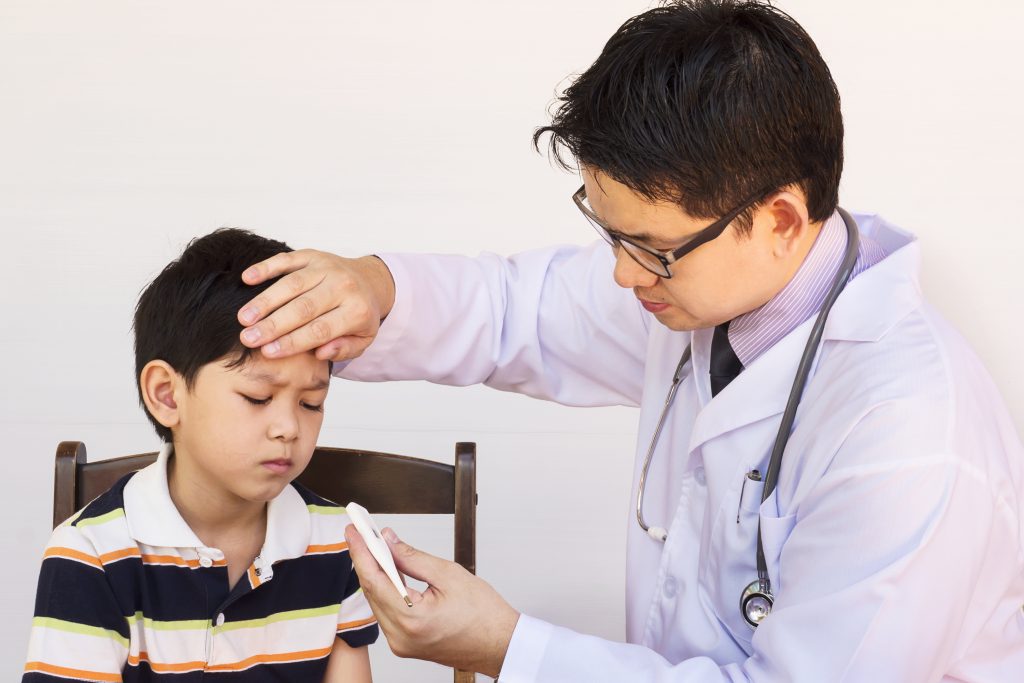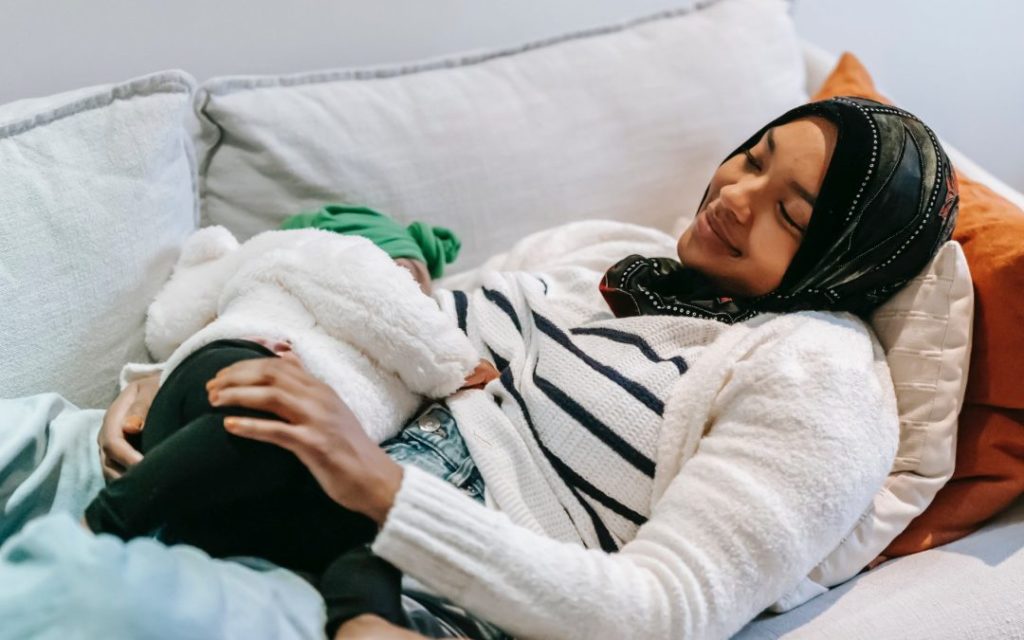
Fever happens when the body’s internal temperature is above its normal level. This is determined by a gland in the brain called the hypothalamus which tells the body to stay around 37°C on regular days. Of course, the body temperature will vary throughout the day: a little lower in the morning and slightly higher towards the evening or when kids are actively playing.
However, the hypothalamus gland would signal the body to have a higher temperature when it is being attacked by infections, germs or sickness. It is the body’s defence mechanism to heat up so that the body becomes a less hospitable host for germs and bacteria that cause infections. So having a fever isn’t a bad thing actually. It is just the body’s response to harmful intruders. Common triggers for fevers include infection or sickness, immunisations and teething. Dressing infants in too many layers of clothing can also trigger a fever. This is because newborns are not very good at regulating their body temperatures.
Fevers usually do not need to be treated and will go away after a couple of days although high fevers can cause quite a bit of discomfort and could make dehydration worse. An exception to this is when fever happens to infants younger than 3 months of age. Fever in newborns could signal a potentially serious infection and requires immediate medical attention.
What Temperature is Considered a Fever?
The simplest way is by touch but using a thermometer (link to thermometer article) would give you a more accurate reading. Your child is having a fever when:
- It reads 37.8°C when measured orally
- It reads 38°C when measured rectally, or via the ear or temporal artery (forehead)
- It reads 37.2°C when measured in an axillary position which is usually done under the arm
A common misconception is that the higher the fever, the worse off your child is. Even experts at Pantai Hospital say despite how high the fever, it is not an indicator of how sick your child is. Even a simple cold or common viral infection can result in high fevers ranging from 38.9°– 40°C. In fact, there are far worse infections that could happen to infants which might not even trigger a fever at all!
During a fever, your child might have chills as his or her body temperature increases. When the fever breaks your child may sweat to release extra heat as his or her temperature starts to drop. Some children may experience a faster heartbeat or breathe faster during a fever, but it is a symptom that usually goes away. However, if your child is having difficulty breathing or continues to breathe faster than normal even after the fever breaks, it would be wise to check in with your family doctor or paediatrician.
How Can I Help My Child Feel Better?
Contrary to what most parents think, not all fevers actually need to be treated. There is no immediate need to medicate if your child is still alert and actively playing. He or she might only be running a low-grade fever. The oral suspension prescribed by your doctor is to help ease the discomfort caused by a fever which should only be administered if there’s a need
So if your little one is starting to fuss because he or she is feeling extremely uncomfortable, you can offer them some paracetamol in the dosage that is right for their age and weight. Always err on the side of caution and call the doctor if you’re unsure of the right dosage to give. This is extremely crucial when it comes to younger babies Never self medicate without seeking professional advice and remember to stick to dosage intervals.
It is better to dress your little one in airy clothes that are lightweight during fevers so that their body heat can escape. Thick long sleeves and thick blankets will only restrict this and cause their temperature to increase. Even though sweating is one way to regulate the body’s internal temperature, there is no medical evidence that supports sweating it out to break a fever. Having the AC on at around 24 to 26 degrees is fine, but try to avoid direct air blast on your little one.
Another way to bring down the temperature during a fever is to give them a sponge bath with tepid or lukewarm water. Cold water sponge baths are not encouraged because it can cause the blood vessels to constrict. When blood vessels are not dilated enough, they will trap and retain the heat in the body instead of releasing it into the air. So remember, tepid water and don’t be surprised if they are irritable during sponge baths as well.
Despite their lack of appetite for food, it would be good to offer plenty of fluids to keep them well hydrated. Water, broth (link to the broth article) and soupy porridge are great choices. If your child’s fever is also coupled with vomiting and diarrhoea, then the doctor might prescribe some oral rehydration salts in their dosage.
Still, the best “medicine” to help them recover is rest. So keep them at home with quiet time activities when they are up for it, otherwise, it is rest, rest, rest. Of course, there is no need to contain them to the bed all day, but they should take things easy for a bit until they are feeling better.
When to Worry?
Here are instances where parents should be calling up the family doctor:
Infants 3 months and below
- a body temperature of 38°C or higher when measured rectally, or via the ear or temporal artery (forehead).
Older child
- a body temperature higher than 39°C.
- a fever lower than 39°C if it is accompanied by:
- Discomfort until the child refuses to drink enough fluids which could result in dehydration.
- Repeated diarrhoea and vomiting.
- Complaints of sore throat or earache.
- Fever lasting more than 24 hrs for kids under 2 years of age or 72 hours those 2 years or older.
- Lethargy and frequent spikes of fevers.
- A chronic medical health problem.
- Rash.
- Pain while peeing.
Seek emergency assistance if:
- Your child refuses to stop crying.
- Your child is extremely fussy which usually means high discomfort.
- Your child is limp, refuses to move, is slow to respond and is inactive.
- Your child has an unexplainable bruise-like rash or purple spots on the skin that was not there before your child got sick.
- Your child has blue lips, tongue, or nails.
- Your infant’s fontanel (soft spot on the head) seems to be bulging or sunken in.
- Your child has a severe headache.
- Your child has trouble breathing that doesn’t improve when airways are cleared.
- Your child keeps leaning forward and drooling.
- Your child experiences a seizure.
- Your child experiences moderate to severe stomachache.

